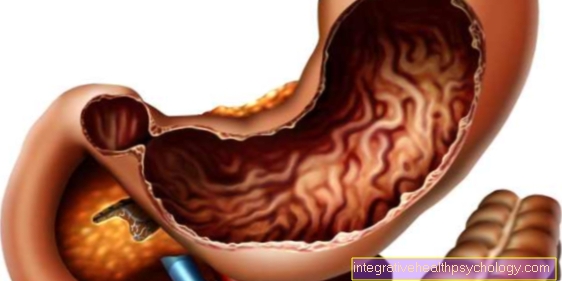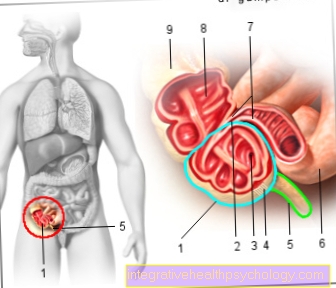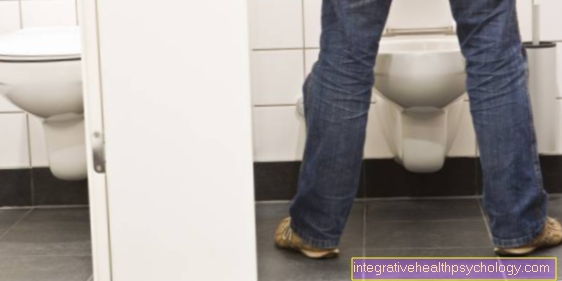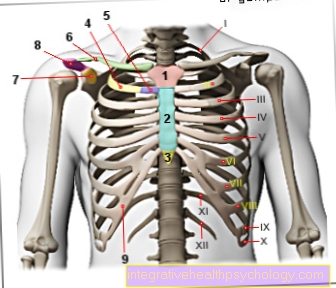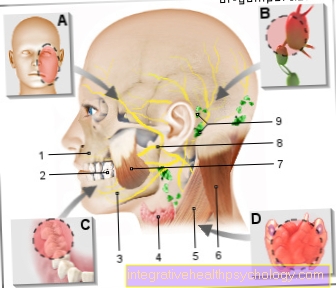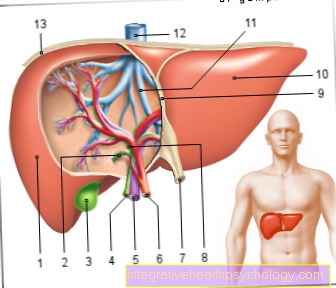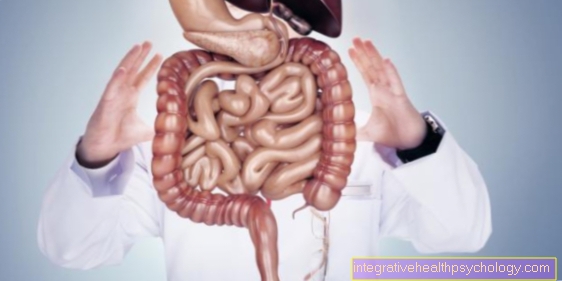Root canal treatment on the molar
introduction
If everyday life is plagued by toothache and bacteria have worked their way into the inside of the tooth to the nerve, usually consider a root canal treatment.
This is a common treatment to preserve the tooth over the long term and to stop the disease from spreading to the surrounding tissue.
Without treatment, the patient is likely to soon lose the tooth, which will result in a prosthetic restoration with bridges or an implant. An incomplete situation in the chewing area leads to a loss of a high degree of chewing comfort and well-being.

Need for root canal treatment
Root canal treatment is often the last resort to save the natural tooth. You could also pull it out and aim for a prosthetic restoration, but maintaining a natural tooth is always a benefit for the patient, even if the treatment can be lengthy and complex. In the anterior region, the usual aesthetics can be maintained through a root canal treatment on the incisor.
A natural tooth always has a clear advantage in terms of function and preservation of the rest of the chewing system and can be preserved if possible. Prosthetic restorations are very good nowadays and in some cases can hardly be distinguished from natural teeth, but their production is associated with costs and time. The aesthetics and function of a natural tooth will never be able to be reproduced 100%.
A root-treated tooth can also be used later for a prosthetic restoration, which is often necessary, especially on the molars, as it is exposed to very high forces and can discolour over time. If the molar tooth breaks, all that remains is often the extraction with subsequent crowning. To do this, the tooth is ground, if there is still enough substance, and cemented in with a crown made of metal, ceramic or a combination of both.
What are the symptoms?
Pain is one of the basic symptoms of an infected tooth. The nerve forwards the stimulus and the pain arises in our brain. With this, the body wants to tell us that something is wrong and needs to be treated.
There is severe pain even before the treatment because the tissue is inflamed. The pain may persist after the treatment, but is not as intense as it was before the procedure. However, this does not mean that something is wrong with the root filling or that the treatment has failed. In fact, this pain is part of the healing process.
The pain usually occurs with exertion, but can also cause a pulsating, stabbing pain at rest. Such infections can also cause headaches and neck pain.
Furthermore, there is a risk that the bacteria will reach the heart via the bloodstream and, in the worst case scenario, will manifest themselves there and trigger endocarditis in the weakened heart.
Pain during a root canal treatment of the molar
The pain may persist after the treatment, but is not as intense as it was before the procedure. However, this does not mean that something is wrong with the filling or that the treatment has failed, but that this pain is part of the healing process.
In the rarest of cases, healing is completely painless. The area around the tooth was heavily stressed by the treatment and existing receptors have to get used to the filling. The tooth and tissue can also be damaged by irritation, which must be given time to recover.
The duration of the pain cannot be precisely determined, but it is usually limited to a period of a few days. Only in special cases do they last for weeks or even months. Swelling and especially discomfort when clenching are not uncommon in the first few days. However, in order to make the pain more bearable, pain relievers such as ibuprofen can be taken in consultation with the doctor. There may be exceptions during pregnancy, which should be clarified with your doctor.
Read on under: Everything about pain in a root canal treatment
Treatment process of a root canal treatment
If a molar needs a root canal treatment, several sessions are usually necessary. First, an X-ray is taken to examine the course of the root canals and to be able to see the extent of the inflammation as a whole.
Next, the affected area is dried with small cotton rolls so that no saliva and the bacteria it contains get into the tooth during the treatment. In addition, saliva is removed with the suction device. Alternatively, a coffer dam can be used for absolute drainage.
The tooth is then numbed with a local anesthetic, otherwise the treatment would be too painful. The agents used are lidocaine, mepivacaine or bupivacaine. Allergies, medication taken or intolerance should be reported to the doctor before treatment. Adrenaline is usually added to the local anesthetic, which narrows the blood vessels and prevents bleeding.
To open the tooth, the dentist uses a drill. This enables him to remove the affected tooth pulp with the nerve fibers from the root. To do this, you need special root files that are of different lengths and thicknesses so that the right one for the respective tooth can be found.
Particularly in the molar area, the difficulty arises that the teeth have several roots that must all be treated individually. The ends of the roots are also often more curved, making it difficult to hollow out the tooth to the tip. After excavation, the canal is rinsed with different solutions. These are chlorhexidine (has anti-inflammatory and antibacterial effects), hydrogen peroxide (disinfection, hemostasis) and sodium hypochlorite (for disinfection).
How the treatment continues now depends on how much the molar was inflamed. If the inflammation was mild, the filling can be started immediately. For a more difficult procedure, an antibacterial and anti-inflammatory drug must first be put into the tooth and rest for a few days. The paste used contains calcium or cortisone with an antibiotic. When the time for filling comes, either directly or after the paste has acted, a material is filled into the canal, which resembles a rubber-like mass. You call it Gutta-percha and it should close the canal tightly. In addition, a sealer is used, which is similar in material to tooth enamel. It is also known under the term density cement.
Read more on the topic: Root filling
An X-ray of the molar tooth must then be taken for control purposes. The dentist can use the X-ray to check whether the root is completely filled and tight. If this were not the case, a treatment step would have to be repeated. A leaky filling would not be acceptable. Afterwards, follow-up appointments are made, which should be followed up to check the current healing status.
Due to the bacterial infestation, root canal treatments have an increased risk that inflammation will recur, which can be dealt with early with thorough follow-up care.
For more information, see: How does a root canal treatment work?
Cost of root canal treatment on the molar
The costs for a root canal treatment on the molars are usually covered by the health insurance. However, the treatment must ensure that the tooth can be saved and that the dentist is able to fill the tooth completely up to the tip.
The exact course of the root canal can be seen on an X-ray. In some cases, however, it can also happen during treatment that the root canal is more branched than you thought. Particularly on the molars, there is often strong branching of the root tips, so that a complete filling is not always possible. If this condition cannot be met by the dentist, the health insurance company will not cover the costs. In this case, the health insurance would only finance the removal of the tooth.
However, there are three other conditions on the molars, at least one of which must be met in order for the costs to be covered.
- The first condition is that in the row of teeth in which the molar is located, the remaining teeth are healthy so that the row of teeth can be preserved. If several teeth in the same row of teeth are severely damaged by caries, the condition is not met.
- The second condition is that if the tooth is already wearing a denture, it will be preserved through the root canal treatment. If the tooth is used as a pillar for a bridge restoration, for example, the root canal treatment would preserve the bridge and the tooth.
- The third and final condition is that the treatment achieves that a free-end situation is avoided.
Drilling, disinfecting and filling the root canals are covered by the health insurance. More modern and more precise procedures are not covered by the health insurance and have to be paid additionally. This includes, for example, an electronic root length measurement or an operating microscope.
The more precisely the root canal treatment can be carried out, the better the chances of success. On average, you can expect costs between € 200 and € 800.
It is important to clearly discuss all possible costs with the dentist before treatment in order to avoid unpleasant surprises. If you haven't understood something exactly, don't be afraid to ask again.
For more information, see: How much does a root canal treatment cost?
Duration of the root canal treatment on the molar
A root canal treatment is not only uncomfortable, it can also take some time. In addition to the treatment appointments, there are also appointments for aftercare and a healing phase. If the chances of success are low, the treatment should be considered and the benefits weighed. Removal of the pulp, disinfection of the canal and subsequent filling can be carried out in one treatment step or divided over two or more sessions. This depends on the individual situation of the patient.
The entire treatment can take a few weeks to months, depending on the success of the treatment. The skill of the practitioner, but also the extent of the previous inflammation, are decisive for the duration of the entire treatment. Severe inflammation, especially on molars with multiple roots, takes more time on average.
You can plan a good hour of treatment time per appointment. The duration of healing also differs from person to person. You can actively support the healing process by allowing your body to rest and avoiding stress. Direct loading of the molar tooth is not recommended, so pulpy foods are particularly useful in the first few days. Alcohol, nicotine and caffeine should not be consumed until they are completely healed, as they put unnecessary stress on the tissue.
Even if the treatment can take a long time, patience is required and the instructions of the dentist must be followed. The healing process is assessed through control appointments and any problems can be identified at an early stage. Usually a good stage is reached after a few days, so that the molar can be loaded again.
Read more on the subject at: How long does a root canal treatment take?
How can you prevent a root canal treatment?
Since the main cause of a root canal treatment on the molars is advanced tooth decay, it is important to pay attention to your daily dental care. This removes the plaque and the bacteria no longer have a breeding ground to survive.
Plaque can only be removed mechanically, so a mouth rinse is not enough, but like a tongue scraper and dental floss, it can be used in addition to brushing your teeth. Molars have many cusps and fissures on which the plaque attaches and the bacteria feel good.
The area of the tooth necks should not be neglected either. Regular check-ups at the dentist and professional teeth cleaning complete the picture of optimal dental care.
Causes of a root canal treatment on the molar
The main cause is untreated tooth decay. Daily food intake creates a coating on our teeth, the so-called plaque. If not removed enough, bacteria such as Streptococcus mutans can multiply. These metabolize the sugar from food and form lactic acid, which attacks the tooth and destroys the tooth structure. If the tooth decay remains untreated, it will work its way through the tooth until it reaches the inside of the tooth and the tooth root. The tooth root consists of at least one root canal that is filled with tooth pulp as well as the tooth nerve and small blood vessels for supply.
A tooth must be supplied with nutrients in order to remain vital. Inflammation occurs when the bacteria get inside. In the course of the inflammatory process, the vessels expand, which press on the tooth nerve and trigger the pain. If the pain is ignored, the bacteria can migrate further and infect the bone until an abscess develops.
However, bacteria do not always have to be the reason for a root canal treatment. Traumatic damage, such as after an accident or a fall, can also result in root canal treatment if the pulp has been opened and bacteria have penetrated.
Another possible reason for pulp inflammation is what is known as grinding trauma, which occurs during crown or bridge treatment. In order for a crown to fit on a tooth, it must be ground while cooling with water. Depending on how much damage the tooth has already experienced in its life, the more resistant or sensitive it is to external influences. It may be that the irritation of grinding leads to inflammation of the pulp and thus necessitates a root canal treatment.
Do I need a crown after a root canal treatment on the molar tooth?
Whether you should crown a molar after a root canal treatment cannot be said in general terms. The decisive factor here is the loss of hard tooth substance. That said, it depends on how much of the tooth is left after the treatment. In most cases, deep caries means that the tooth needs root canal treatment. The dentist must first remove the tooth decay. Then he can start to drill the access to the canals and thus the tooth loses more and more of its substance and thus also of its stability. If it is significantly weakened, it is advisable to crown the molar tooth now.
Molars in particular are exposed to high chewing loads and run the risk of breaking if the restoration is inadequate. If a tooth breaks, it can usually no longer be saved.
However, crowning is not necessary for all teeth. If there is still enough hard substance available, it is alternatively possible to build up the tooth with a plastic-based build-up material. However, this is only sufficiently stable if a maximum of two outer surfaces of the tooth are missing.
If more than these two are missing, a so-called "root post" must be placed in addition to the build-up. These are small pins made of metal, ceramic or plastic, which are inserted into the root and which then anchor the filling in the tooth. This means that they connect the root and crown parts of the tooth.
Read more on the subject at: When do I need a crown after a root canal treatment?
Is there a difference between a root canal treatment on the upper and lower jaw?
There is no general difference in root canal treatment in terms of the doctor's approach.
Only the anatomy of the teeth usually differs between the two jaws. The upper posterior teeth usually have three roots, the lower posterior teeth usually two roots. This can also vary the number of canals in the roots.
For example, the first molar tooth in the upper jaw is very likely to have four canals. Its counterpart in the lower jaw usually has only three canals. However, the individuality and variability of the teeth must always be considered.
Summary
A root canal treatment on the molars is a frequently performed procedure, but also a time-consuming process that should not be underestimated.
Careful treatment and good aftercare are the keys to success, so you can expect an average success rate of 80-95%.


